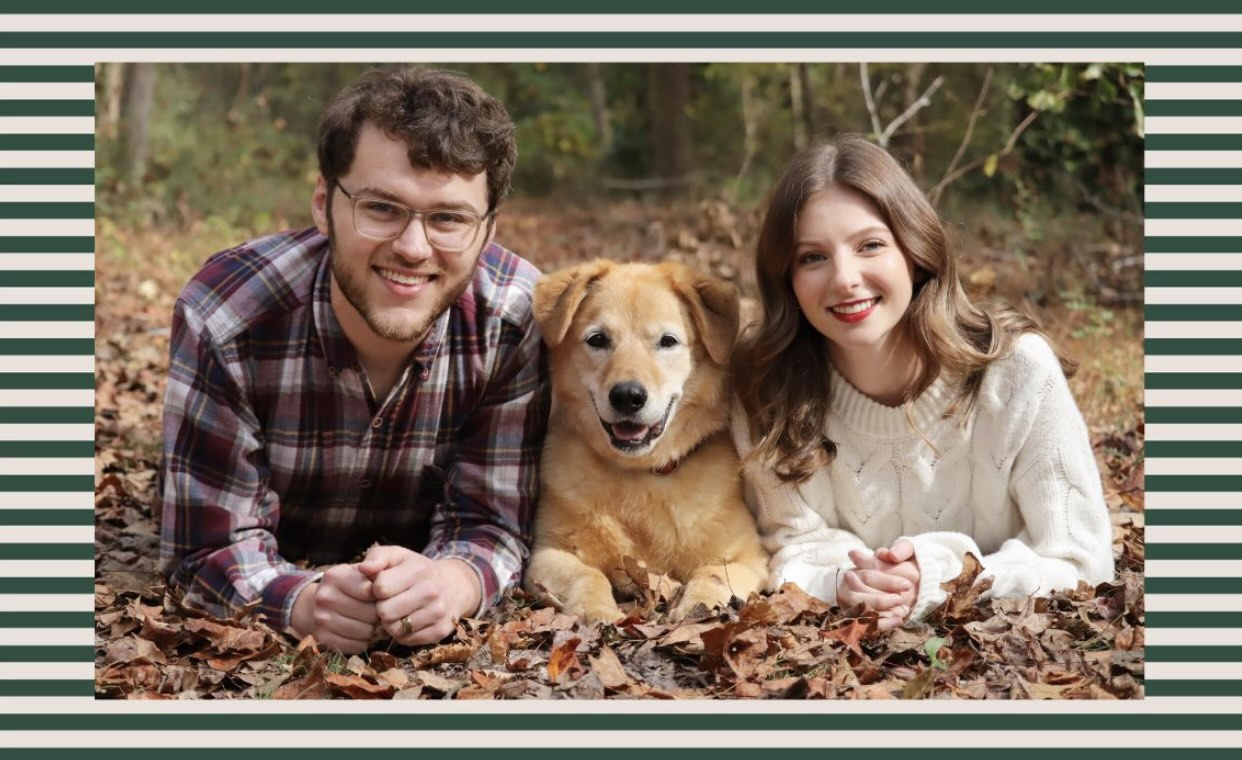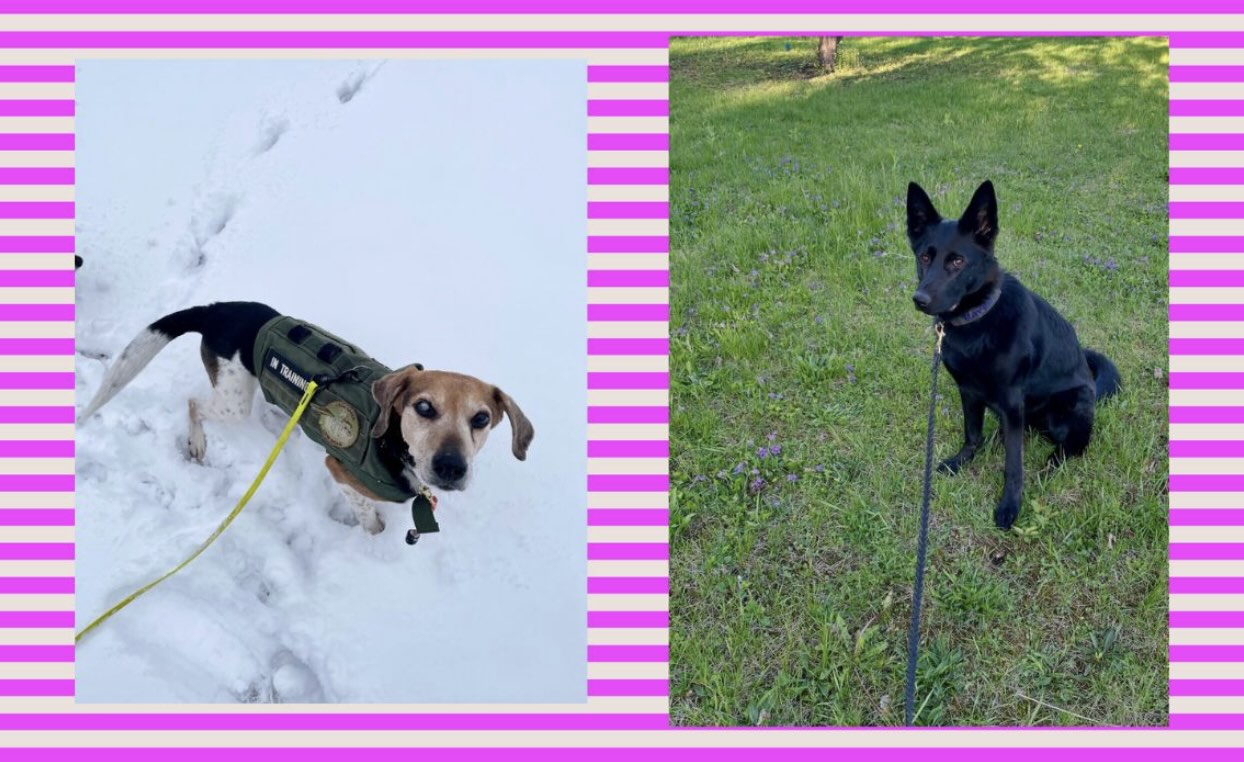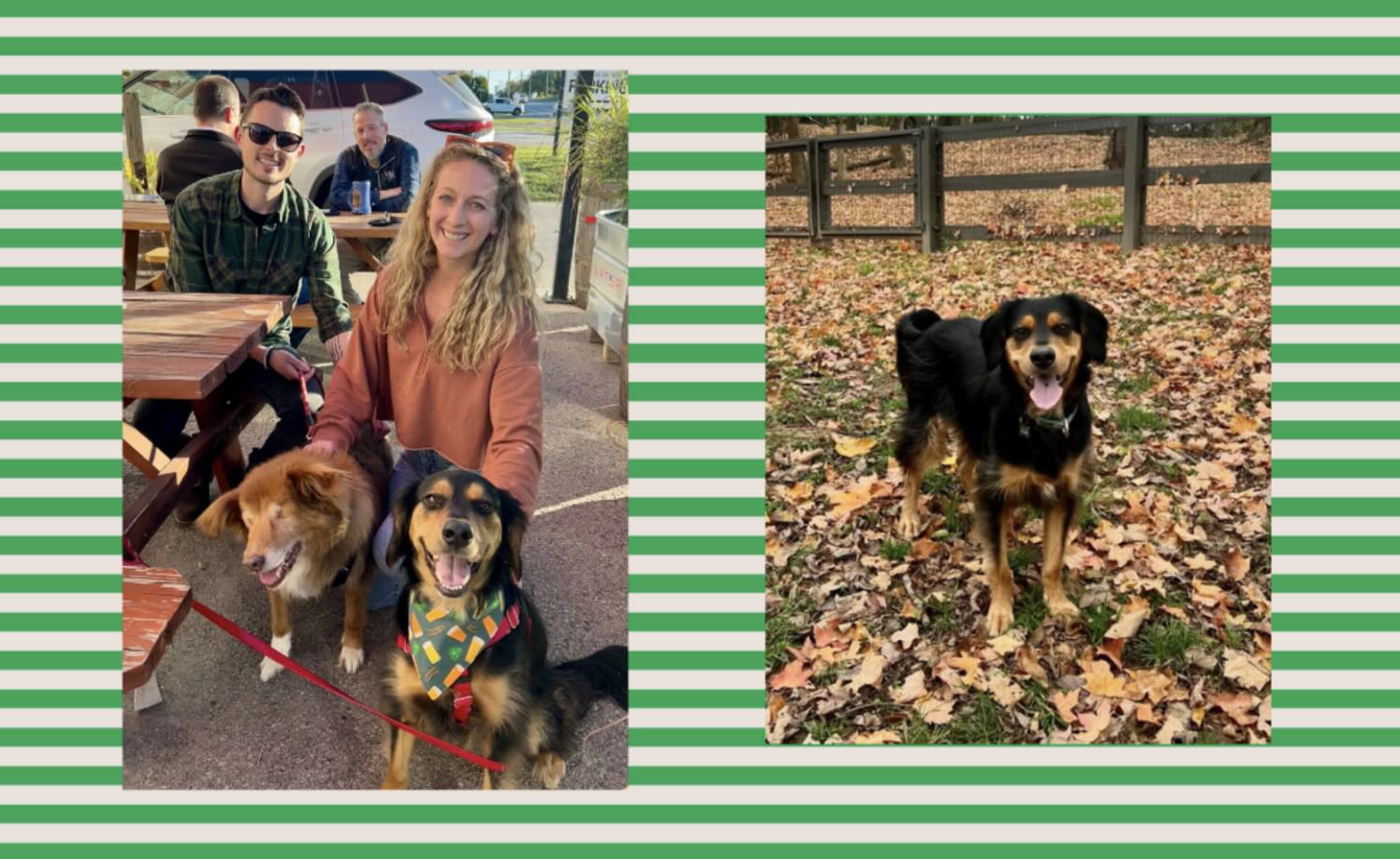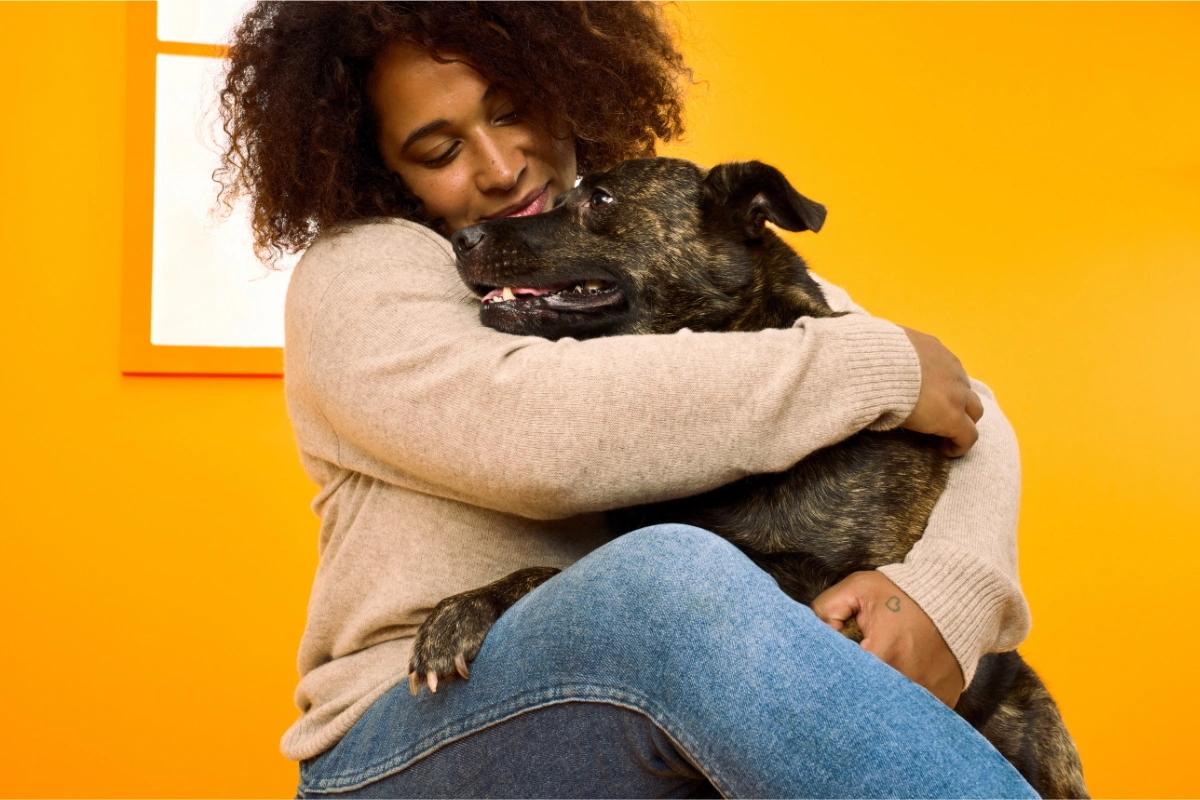If you’re reading this, you already know: Caring for pets can be a lot of work. (Rewarding, worthwhile work! But still: Responsibility for another living creature takes effort.) Navigating the experience with support from a partner can make everything more manageable. But splitting up responsibilities in a way that feels fair—if not always directly equal—can sometimes cause conflict, too.
We asked nine pet parents how they divide and conquer pet-care responsibilities in their own households. Although everyone’s situation is different, we found a few patterns about what works and what doesn’t.
Here’s part two of our three-part series: How Callie and Aaron, Paul and Ems, and Sarah and Brian care for dogs who belong a little (or a lot) more to one partner than the other. Take a look at part one here (how couples who got their dogs together divide pet care tasks), and stay tuned for our final interviews about what happens when one partner wants pets more than the other!

Callie and Aaron: Playing to their strengths
TL;DR: Callie and Aaron live with dog Cosmo and cat Java. Callie takes care of pet parenthood’s administrative tasks—like scheduling vet appointments and organizing logistics—while her husband Aaron handles more of the day-to-day care. This division came naturally. It lets them both play to their strengths!
“I don’t mind taking care of the administrative tasks as I prefer to be in charge of keeping track of what vaccines are needed at each vet exam and so on,” says Callie. “Aaron is happy with this arrangement as well as he doesn't excel at organizational tasks.”
- Did you get your pets together?
- I (Callie) adopted Cosmo when Aaron and I were still dating, and Cosmo was my dog until we got married. Java was adopted by both of us.
- How do you divide up pet care tasks?
- Aaron generally takes care of more of the day-to-day pet care tasks, such as feeding Cosmo and scooping Java’s litter boxes. We always walk Cosmo together as a family. I take care of the “administrative” tasks like scheduling all vet appointments and communicating with our vet if anything issues arise, getting prescription refills, administering monthly preventatives, and arranging pet-sitters. I prefer never having to scoop litter boxes and I am not a morning person, so I appreciate not having to jump out of bed in the morning to let Cosmo outside or feed him.
- Any tips for someone having these conversations in their own family?
- I will say it is always a good idea to talk through all logistics with your partner before bringing a pet into your lives. Having set expectations can help to avoid later misunderstandings and conflict. This is important for any couple, but especially if one partner (or both) has never been a pet owner and might not know what it entails or doesn’t want to be as involved in the care of your pet.
- What’s your favorite thing about your pets?
- We love Cosmo’s gentleness and mellow demeanor. The most excited he gets is when we have been gone for a few hours and return home, and occasionally we can get him fired up enough to give us a small “arrooo,” which is always hilarious.

Paul and Ems: The trainer and the Disney mom
TL;DR: Paul and Ems have dedicated their lives to both dogs with unique needs (like senior and hospice rescues) and those who excel in sports (like Paul’s competition dogs). Currently, their menagerie includes Raven, a three-year-old German shepherd; Kaylee, a 12-year-old mixed breed; Henry, a 14-year-old hound mix; and Billy Idol, a 10-year-old mostly blind beagle. “There will always be a mix of rescue/shelter and breed specific dogs here,” Paul says.
“Like most things in our relationship, Em and I share tasks according to our strengths,” he adds. “We make it work because we're a team.”
- Did you get your pets together?
- We acquired our dogs together. In addition to my competition dogs, we adopt senior/hospice dogs to give them a forever home.
- Did one of you want pets more than the other?
- Did one of you want pets more than the other? Ems is a cat person and I am a dog person, but we’re about equal in wanting pets as we deliberately have no kids.
- How do you divide up pet care tasks?
- I'm responsible for all training and also provide primary care for Raven. She’s a working line shepherd. GSDs generally have one bonded person and everyone else is a spare human. Ems can feed her, or take her out on our property, but I wouldn't want her doing much in the way of handling in public.
- For our other three dogs, I'm the trainer and maintain house manners. Ems is the Disney Mom. She feeds them, takes them to vets, gives them treats, and cuddles with them. They go with her to help sell flowers at farmer's markets and “assist” on the flower farm.
- Has that division changed over time?
- We had equal roles with our first dog, but when I got into competitive dog sports, I've always had “my dog” and the others are house dogs.
- Any tips for someone having these conversations in their own family?
- I would strongly suggest that families establish rules and guidelines for acceptable dog behaviour. For example, all our dogs are barrier trained, which means that none of our dogs will go outside through the front or back doors without being given permission. Beyond that, we have rules for each dog. Billy isn't allowed in bed because he's a beagle with special needs. His blindness makes him mouthy when startled, including by the other dogs. Beyond the house rules, the competition dogs have stricter requirements because they are competition dogs.
- What matters most is that the humans are on the same page and provide consistency.
- What’s your favorite activity to do with your dogs?
- I love competing in AKC sports with Kaylee (now retired) and Raven. It's wonderful to have an external benchmark of where we're at and how we can improve. Other than that, my favorite thing about my dogs involves building a wonderful home where they can be dogs and we can do all that we can to maximize their limited time, whether that means swimming, hiking, car rides, or special treats.

Sarah and Brian: Always acting as a team
TL;DR: Sarah and Brian both had their own dogs before they fell in love. Now they tackle everything as a team. “As we've combined our lives, we take equal responsibility for both dogs,” Sarah says. They’re still primarily responsible for their own pups when it comes to big expenses and decisions.
“Focus on what you each enjoy doing for the dogs, what's easiest for each of you based on your schedule and needs, and then divide what's left,” adds Sarah’s partner, Brian.
- Did you get your pets together?
- We each brought dogs into the relationship. I (Sarah) came with Pom: an energetic and affectionate dog with plenty of behavioral quirks and challenges. Brian came with Wilfred, a sweet senior who is now 16 years old and has been without eyes for half his life. Brian also had Juni, a sweet and timid senior girl who passed in the beginning of our relationship.
- We both love dogs and plan to always have them in our lives.
- How do you divide up pet care tasks?
- We divide things pretty evenly but don't have assigned tasks or track who does what.
- We base division of care off of a combination of the dogs' needs and our needs. For example, Brian wakes up earlier for work so he usually does morning bathroom breaks, and I have remote flexibility so I'll do more during the day.
- We both do fun things for our own and each other's dogs: Brian will set up play dates for Pom with a neighbor friend's dog, and I'll introduce Wilfred to new enrichment activities. We do activities and spend time with both dogs together (walks, hiking with Pom, training with Pom, making special food for Wilfred, taking them to breweries). If someone has less capacity at any point, the other person tries to take on more of the work.
- When it comes to expenses and the big decisions, like veterinary care, Brian is primarily responsible for Wilfred and I am responsible for Pom, and we support each other as needed.
- Has that division changed over time?
- When we first started dating, Brian taking Pom on a walk for me, or me stopping by Brian's to visit Wilfred when we had a long work day would have been considered doing the other person a favor. Now that we live together, we've transitioned into communicating about both dogs' needs regularly and treating them as both of our responsibilities. We are very lucky that this has come naturally to us and wouldn't change anything.
- What is it like to talk about division of labor for pet care in your household? Any tips for someone trying to have these conversations in their own family?
- Communication about what the dogs need is ongoing throughout the day. It is consistent, mutual, and frequent. We plan things together (and frequently send funny snapchats or photos to provide updates on what the dogs have been up to). We have our own language to talk about the dogs that's riddled with inside jokes and probably incomprehensible to most.
- What’s your favorite thing about your dog(s)? Or your favorite activity to do together?
- I love getting to know what makes Wilfred happy and seeing how happy he is when you come home. Without eyes, and with old bones, it's harder for him to be expressive but it's so special when you get to know how he shows he loves you or is excited about something. I love too much about Pom to pick a favorite, but I love our emotional bond and how affectionate he is.
- Brian’s favorite things about the dogs are that they’re patient with each other despite their challenges. Wilfred is so sweet despite everything he’s gone through which motivates Brian to relax and appreciate things.
Every relationship is different
No one we interviewed—and no one I’ve ever met in real life—treats pet parenthood in exactly the same way. That’s okay! There’s no single “right” answer when it comes to dividing up pet care tasks. What matters most is communication, mutual support, and figuring out what keeps things running smoothly in your own household.
If you’re looking for inspiration? Pull ideas from how fellow couples structure their responsibilities. But don’t treat anyone else’s approach as your own blueprint. You know your own pets, partner, and preferences best.

What’s a Rich Text element?
The rich text element allows you to create and format headings, paragraphs, blockquotes, images, and video all in one place instead of having to add and format them individually. Just double-click and easily create content.

Static and dynamic content editing
Static and dynamic content editing
A rich text element can be used with static or dynamic content. For static content, just drop it into any page and begin editing. For dynamic content, add a rich text field to any collection and then connect a rich text element to that field in the settings panel. Voila!
How to customize formatting for each rich text
Headings, paragraphs, blockquotes, figures, images, and figure captions can all be styled after a class is added to the rich text element using the "When inside of" nested selector system.










.avif)